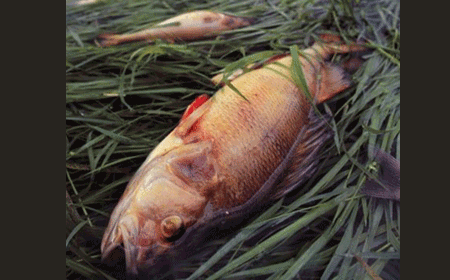SITTEE, Stann Creek District, Thurs. June 13, 2019– Amidst all the irregular climate patterns in Belize and the broader Caribbean, an equally strange occurrence known as hypoxia has been occurring in Southern Belize since last week.
Concerned residents reported to the media that dead fish have been seen floating in the Sittee River, and initially, no one knew what was causing this phenomenon..
On Wednesday, the Department of the Environment (DOE) confirmed that the fish died due to a lack of oxygen, which is transported to the cells of the fish during breathing and used for metabolic reactions. According to the DOE, water samples and DNA samples from dead fish were tested and the results had proven that oxygen levels were below sustainable for the lives of the aquatic animals (a phenomenon known as hypoxia).
The department concluded that the excess biodegradable material in the water brought in with the high tide, combined with high temperatures, caused the rapid reproduction of bacteria and algae in the area.
Like any other plant, algae relies on oxygen consumption to produce food and it is believed that this caused the oxygen in the river to deplete, thus killing the fish.
A similar phenomenon has been occurring in the Gulf of Mexico, known as “dead zone,” where the low concentration of dissolved oxygen makes the water uninhabitable by the fish that live in it.
Louisiana State University scientists as well as the National Oceanic and Atmospheric Administration have both conducted research which supports the prediction that the Gulf of Mexico will see its second largest dead zone on record in the upcoming months.
Commercial fishermen will likely see an in increase in expenses due to having to travel to fishing zones further outside the Gulf. There is also the potential of a decrease in income for these commercial fishers due to a surplus death of aquatic life in the Gulf of Mexico.

